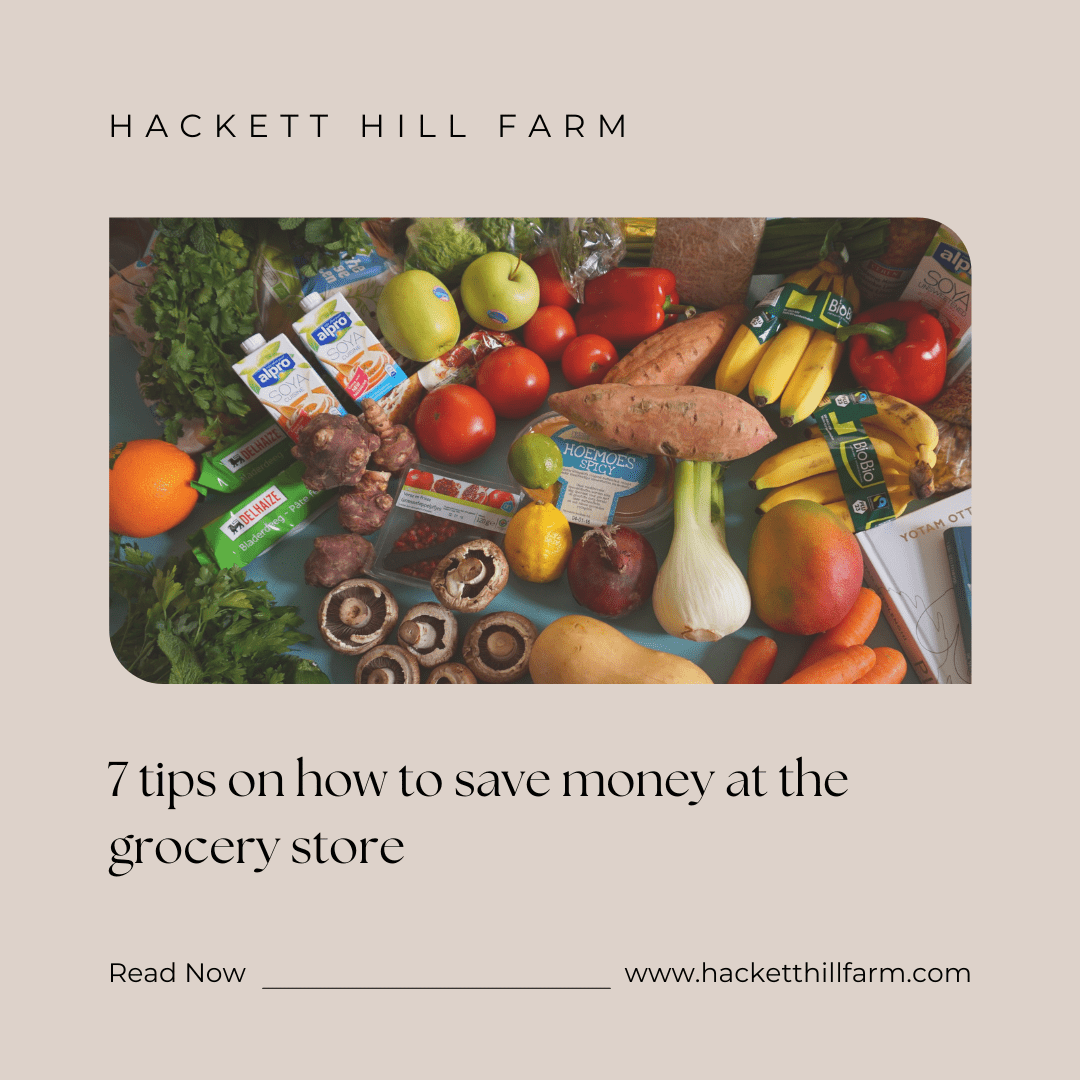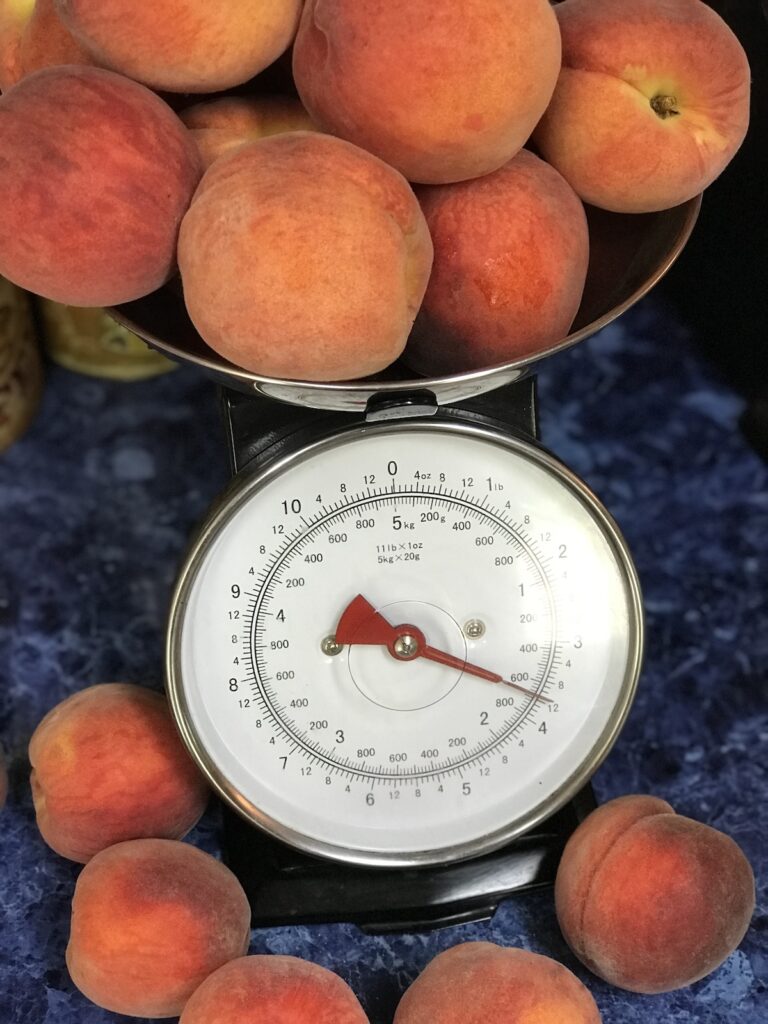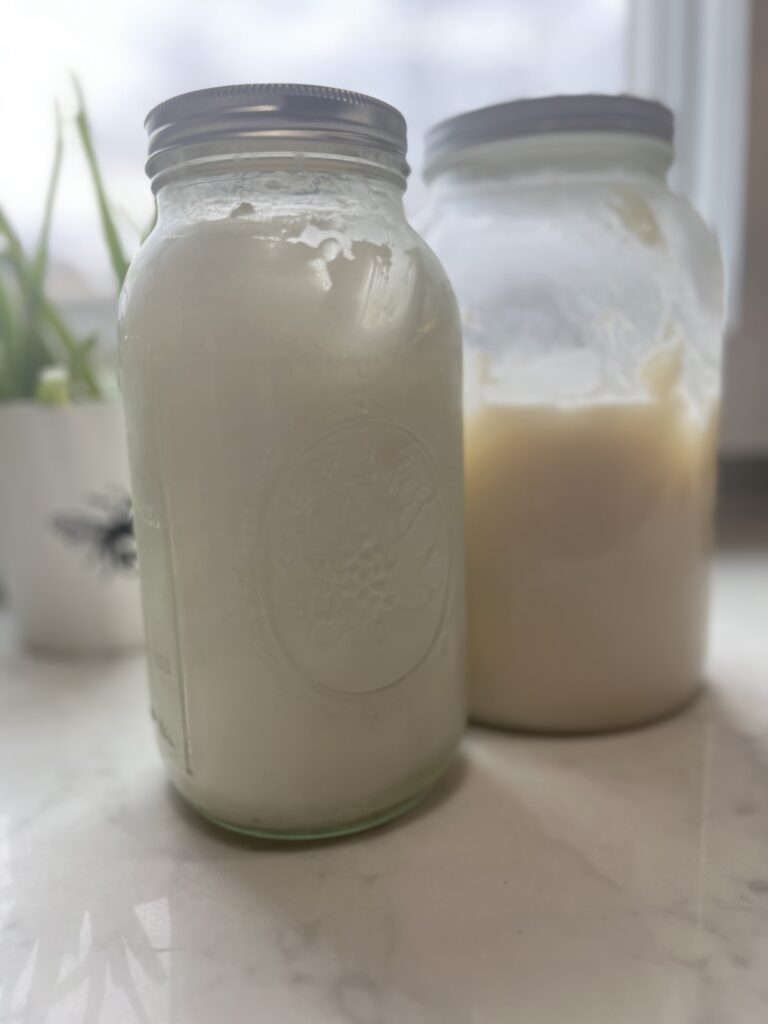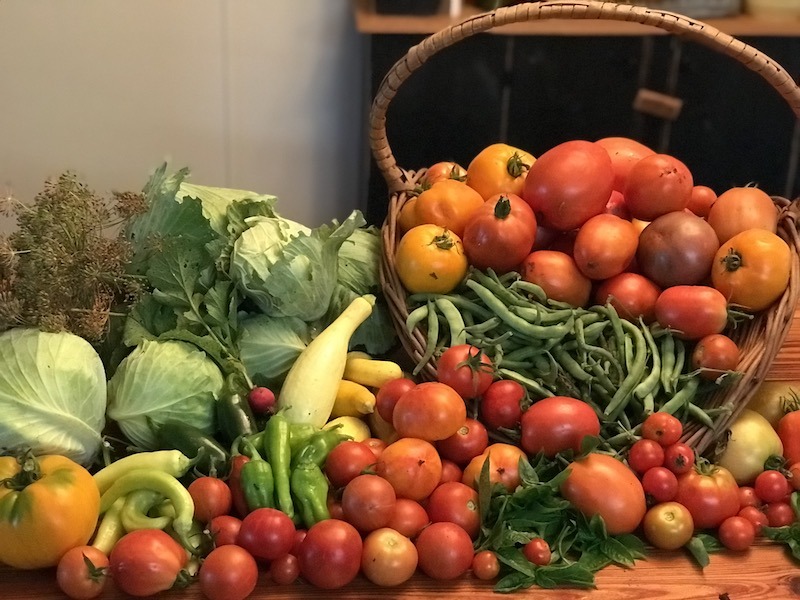
7 Tips on How to Save Money on Groceries
We have all seen the rising prices on the grocery store shelves. Since the pandemic threw a wrench into our food system, followed by high inflation, there is not much that has escaped the rising costs. So this year I have approached grocery shopping a little differently. Check out how I save money on groceries!
My philosophy this year has been all about saving money, and one of the biggest ways my family has spent money in the past is on groceries. It is really not a stretch for our family of 5 to have a monthly grocery bill of $700 to $800. That is relatively cheap compared to the USDA’s estimation of $922 to a whopping $1488!! That is strictly groceries y’all! I started tracking our grocery bills and was appalled at how much we spend on food each month. I started looking at the things I was buying and wondered, how in the world these things were adding up to this exorbitant amount! Today I am going to share my tips for cutting that grocery bill and your trips to the grocery store in half!

Tip #1 to Save Money on Groceries- Buy Multipurpose Whole Ingredients
This is a real winner for me. I found I was buying a lot of “single use” items at the grocery store. Things like bread, yogurt, and brown sugar. While these things seem pretty inexpensive, when you start compounding them it really adds up over time. Instead of buying these items premade, I decided to focus on purchasing the ingredients to make them. Flour, milk, and sugar go a lot further in my kitchen for a lot less money and fresher more wholesome end products. This goes as far as buying a whole chicken versus a package of breasts or thighs. A whole chicken not only provides multiple meals potentially, but its bones can then be used to make a delicious stock for a soup later!
Figuring out how to use ingredients versus buying premade items takes a little upfront work to learn how to make the items you are used to buying, but it really has a big impact on your grocery bill overall. A loaf of good quality bread for instance is about $5 at the store, while a homemade loaf comes in at about $2. That $3 saved per week alone comes to a yearly savings of $156!
When you buy ingredients, not only do you have more versatility in your pantry and realized cost savings, but you are also learning new skills and the food you produce at home is far superior. You no longer have to worry about all the added preservatives and sugars in your food. Your bank account and your health will thank you!

Tip #2 to Save Money on Groceries- Buy in Bulk and in Season
This one is a little more difficult, but it is very effective at saving money in the long term, especially if you follow tip #1. Buying in bulk typically means you are able to get better per unit pricing. Whether this is at someplace like Sam’s Club or Azure Standard or purchasing a side of beef from a local farmer, buying in bulk is a great way to build up your stockpile while also saving some serious cash.
There are some challenges to bulk buying however. In order to start buying in bulk you have to have a plan on where and how to store your items for long term use. You can’t buy a side of beef and not have a place to store it. It is also one up front lump sum cost for an item, so make sure you budget for that when starting to buy in bulk.
Buying in season goes hand in hand with buying in bulk. Farmers markets are a great place to buy in season produce in large quantities. We grow a lot of our own produce, but things like corn is a must buy for us. We buy in bulk and freeze the delicious kernels for later! Buying in season and locally is a great way to save on produce to get you through the winter months.
If you are low on space to store canned goods, get creative a store them in unassuming places like under your bed! Repurpose a broken freezer as a root cellar or can meat instead of freezing it! The possibilities are endless.
Tip #3 to Save Money on Groceries – Reconsider How You Are Using Subscription Boxes
This one is tricky for me. On one hand I love a subscription meal kit box because they take the guess work out of dinner, they offer variety, and there is usually minimal waste. However, for me, this was a big money suck. The reason being, I did not adjust my normal grocery spend on a weekly basis. I would forget a box was coming and end up having so many items on hand, we would run the risk of food going bad before we could even get to it. I also have a bad habit of not sticking to the recipe, which leaves me with a huge bag of random condiments and items, like the 9 million carrots they send, in my fridge taking up space. Subscription boxes are great on occasion, but require more thoughtfulness when going to the grocery store to ensure you account for the box.
The subscription boxes were also not practical for a family of 5. Majority of the boxes were a max of 4 to a family which worked sometimes, but more often than not I ended up adding in extra ingredients taking the price of our meal up. These boxes are also relatively expensive unless you have a discount, which we did for a long time as I worked for a subscription company. Since no longer having the discount, I would be hard pressed to find the value in the ingredients, quality, and quantity of a subscription box just for the convenience of not having to think about what’s for dinner.

Tip #4 Keep Stock of What you Have in Stock
If you are following Tip #2 you need to have a good plan on how to keep stock of what you have on hand. There is nothing worse than finding that lone cucumber in the back of the fridge drawer that has turned slimy because you forgot you bought it weeks ago. Keeping stock of what is in your fridge, pantry, and freezer is a great way to reduce food waste and ultimately your grocery bill.
Keeping stock is as easy as making sure everything is visible in your pantry or as complex as excel sheets. There are definitely some great ways out there to keep stock in a way that works for you. Shelfcooking.com has an easy Kitchen Inventory Sheet or you can create your own method that works for you and your family! Personally, I take Sunday’s to clean my fridge. We eat up all the leftovers and I get an idea of what I have that needs to be eaten right away. I then plan my meals early in the week around those items.
Tip #5 to Save Money on Groceries- Shop Pick Up
We have all been there, done that…. You go into the grocery store with the best of intentions to stick to the list, but somehow your cart gets filled with things you had no intentions of buying. I find that this happens more often than not, especially if the kids are with me or if I go to the store hungry. Let’s be honest, we are more likely to impulse spend as we are walking through the aisles of Wal-Mart than if we are placing a pickup order online. It is the nature of the store front.
Pick up also allows you to keep track of your spend as you load it into your cart. This is really convenient when you are on a tight budget. If my goal is to spend less than $100 per shopping trip I can more easily keep track of how much I spend as I go versus getting the final total at a check out line.
Not only does this method save money due to reduced impulse buying, but it also saves you time. Time is money! Prior to pickup, I would spend 2 hours in the grocery store and would spend $300 or more on groceries. If I value my time, which I do, I have to account for that 2 hours spent just wondering around a store and standing in a line. If I value my time at $30 an hour that was a $60 surcharge on my already $300 purchase! Your time is valuable!!
Tip #6 to Save Money on Groceries- Meal Plan
Meal planning is not a new concept, but it is a great way to save money. This is especially true if you are following tip #2 and buying in bulk and #4 keeping stock of what you have. When meal planning, I like to plan for the upcoming week on the weekend, usually Sunday when we clean out our fridge of leftovers. I use a type of bullet journal that I keep my daily to dos and meal plans in to help keep me organized, but if a bullet journal isn’t for you, just a piece of notebook paper stuck to the fridge will work just as well.
I know some people aren’t planners like me (I like to make lists for my lists), but having a plan is really important to ensure your food isn’t going bad in the fridge. If a full week plan is too much, try planning 2 days in advance. You will have to spend a little more time in the fridge or pantry each week taking stock, but it will pay off in the end by reducing your overall waste in the kitchen. Good for your pocket and good for the environment!
Tip #7 to Save Money On Groceries- Grow Your Own Food!
Growing your own food is a great way to save money on groceries. Even starting small and growing a few tomato plants can be a real cost savings if done correctly. The least expensive way to grow plants is to start from seed and seed save. You can check out more about seed saving on our seed saving post.
Growing your own food is more than just plants, there are also a number of small animals that are perfect to pack a freezer such as meat rabbits or meat chickens. Even owning a few laying hens, if allowed to free range can really save you money on your grocery bill. Not only can growing your own food be a cost savings, the quality of food you and your family consume is going to be much higher.
Another way to grow your own food is to consider hunting and fishing. Yes, hunting and fishing can be expensive to start out when you are purchasing equipment, however the long term cost is relatively low to pack your freezer with delicious and healthy proteins.

What Will You Do With The Cost Savings?
The key to this whole practice is to have a plan on what to do with the cost savings you realize. I have found that money saved with no plan, is money spent on frivolous things. If that is the case, is the time and effort of savings really worth it? I challenge you to determine what your money goals are and how you are going to use this extra money each month. Is it going to go to savings for a rainy day, pay off a bill, or is the intent to enrich your life with experiences. Whatever you decide to do, it is important to set this cost savings aside for that use.
I hope you have found some inspiration to help save you and your family some serious cash in the grocery store. I challenge you to take some of these tips and put them into practice and track how much money you save. We would love to hear from you in the comments if you have any additional tips or if you try any of the ones mentioned above! Come visit us over on Instagram and Pinterest and give us a follow!





